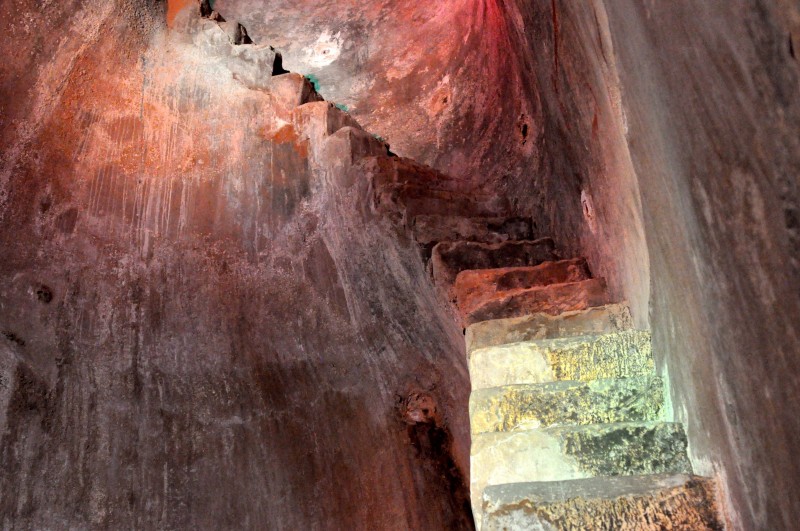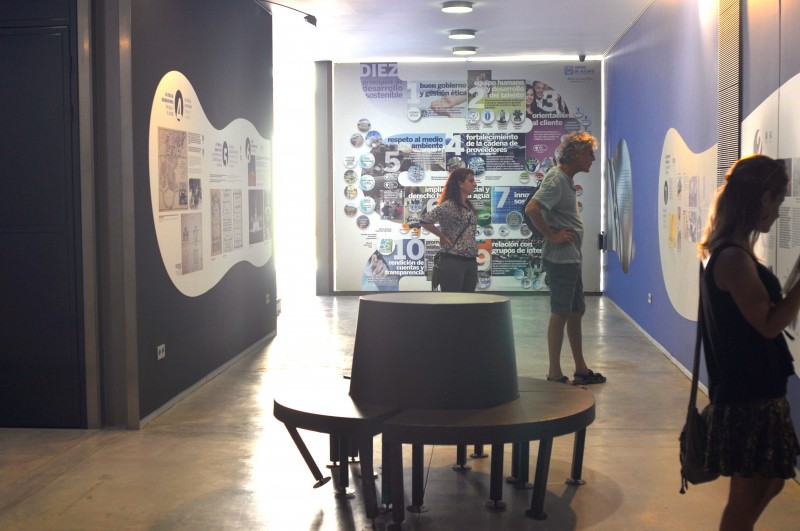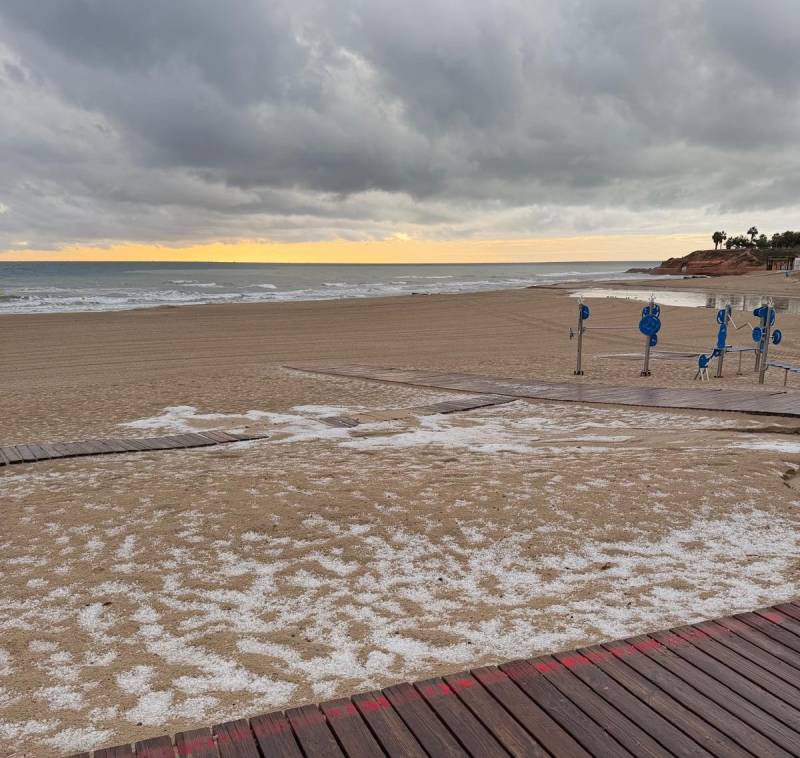- Region
- Vega baja
- Marina Alta
- Marina Baixa
- Alicante
- Baix Vinalopo
- Alto & Mitja Vinalopo
-
ALL TOWNS
- ALICANTE TOWNS
- Albatera
- Alfaz Del Pi
- Alicante City
- Alcoy
- Almoradi
- Benitatxell
- Bigastro
- Benferri
- Benidorm
- Calosa de Segura
- Calpe
- Catral
- Costa Blanca
- Cox
- Daya Vieja
- Denia
- Elche
- Elda
- Granja de Rocamora
- Guardamar del Segura
- Jacarilla
- Los Montesinos
- Orihuela
- Pedreguer
- Pilar de Horadada
- Playa Flamenca
- Quesada
- Rafal
- Redovan
- Rojales
- San Isidro
- Torrevieja
- Comunidad Valenciana
El Museo de Aguas in Alicante City
Visitors can walk inside the cavities of the ancient wells of Garrigós, dating back to the 16th century
The Museo de Aguas is constructed around the ancient ‘pozos’ (wells) of Garrigós, which are located at the foot of Mount Benacantil, in Plaza del Puente in the old quarter of Alicante city. Visitors on their way to El Parque de la Ereta or on their way down from the Castillo de Santa Bárbara should definitely stop by at the water museum as it is conveniently located right next to the main park entrance and is free to enter.

Historically the museum is situated by the wells of Garrigó in Plaza del Puente because rainwater would run from Benacantil’s foothill via the aqueduct and cross the plaza into the wells where the water was then stored.The 'pozos' visible today date back to around the 16th Century, although the original wells in this site were built by the Moors who occupied the city. More of what is visible today was built during the 19th century by a man named Antonio Garrigós, hence the name that was later given to the wells.
In the 19th century cavities were excavated from the earth in this area to create a cistern system that could store more than 800,000 litres of rainwater, which would later be distributed around the city. The city of Alicante benefitted considerably from this new construction after many years of suffering from serious droughts. The wells therefore served as an important water storage system for many years until they were later replaced by pumps and pipes that were installed around the city piping in water from the nearby town of Sax.

Today visitors can walk inside the rock cavities to see the wells which once held huge volumes of water, and the led lighting system installed inside the manmade caves creates a blue bubbles effect that makes visitors feel as if they are swimming in the water.
On the ground floor of the Alicante water museum visitors can discover the evolution of water and how it was used by different settlements and cultures that populated the city of Alicante in different periods in history.
Upstairs on the second floor is an educative and interactive area designed for children with games and screens explaining the different states of water, how it is supplied to our homes and how the water management cycle works.
On the second floor visitors can see the main projects and works that have been carried out in the past by the company, Aguas de Alicante, as well as the exhibition area displaying information about various environmental issues, the water purification process and the green belt movement.

Although all of the museum information boards are in Spanish, there are QR (quick response) codes on every board near the piece of text which can be scanned using an android phone and translated into English via a number of translation apps. In addition information leaflets in English are given out to visitors on entering the museum.
The museum can be accessed on foot from the town hall on Calle Mayor by going up the street and taking a left onto Calle Llortja dels Caballers, following the road round and walking up the steps in the corner of Plaza Virgen del Remedio. Walkers can then climb the next set of steps that are painted in huge colourful stripes, which lead to Plaza del Puente where the museum can be located at the far corner.

Alternatively, if visitors are driving they can park in the underground car park just off La Rambla de Mendez Nunez in the entrance to Plaza de San Cristobal and walk from the plaza into Calle de Argensola, follow the road round, pass Plaza de Carmen and continue along Calle de Toledo until they reach the park entrance which is located round the corner on the left.
Visitors walking down from the castle and Parque Ereta will see the museum next to the entrance gates of the park.
Opening hours:
September to May
Tuesdays to Friday from 10:00 to 14:00 and 17:00 to 20:00
Saturdays and Sundays from 10:00 to 14:00
June to August
Tuesdays to Fridays from 10:00 to 14:00 and 18:00 to 21:00
Saturdays and Sundays from 10:00 to 14:00
Entry free of charge.
To see more information about visiting the City of Alicante, including what's on and places to visit, go to the dedicated Alicante City section, accessed using the town search box on the header of every page


































